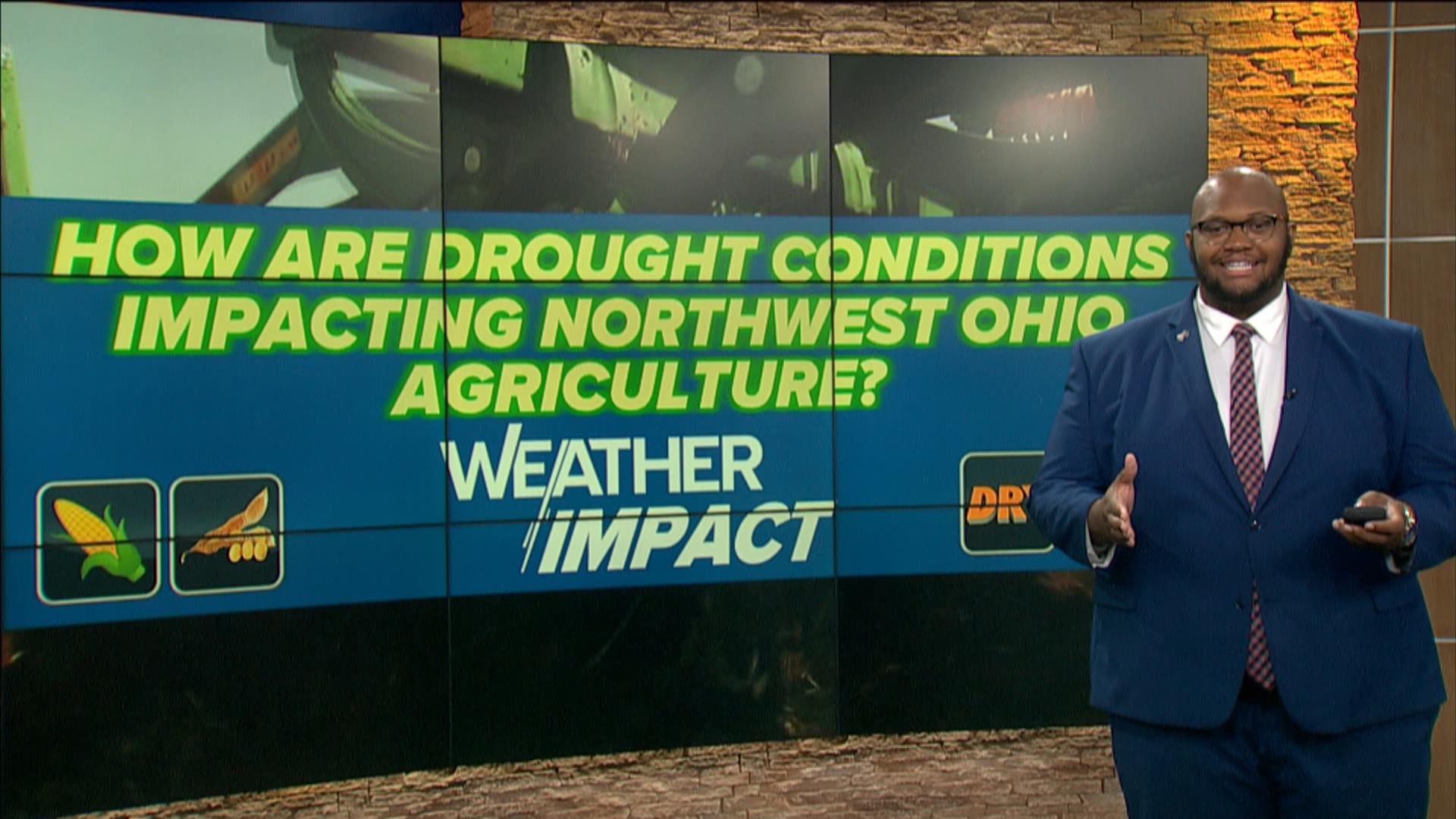TOLEDO, Ohio — As extreme heat continues to impact our area and throughout the state, it has not made it easy for farmers trying to get the most out of this year’s yield.
Farmers all across northwest Ohio must deal with adversity every year when it comes to the growing season. Just around the start of the planting season, we were getting an abundant amount of rain across the area, causing farmers to plant much later in the season.
Once they were able to find the true sweet spot to plant, the rainy pattern continued, rapidly growing crops all across the area resulting in things being ahead of schedule.
As we know well, the weather in our area never stays consistent, and it is always changing especially during the summer months.
After the heat wave we saw in June, temperatures and rainfall took a back seat to some much quieter and milder conditions across our area.
All of August has been truly milder and much cooler, along with the lack of rain recently. The recent rain has helped a bit, but crops will still have to play catch up to fight back against the drought we are experiencing not only in northwest Ohio but especially in southern Ohio where this is an extreme drought.
In this week’s Weather Impact, we are breaking down how the drought and hot conditions are impacting northwest Ohio agriculture.

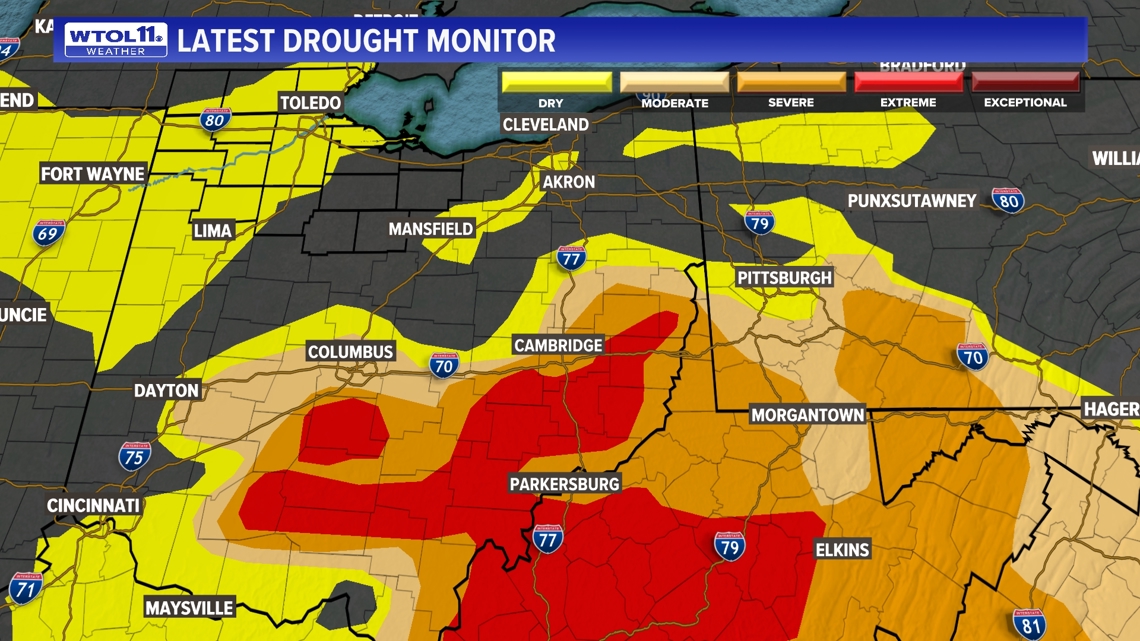
The recipe for weather that farmers do not want is extreme heat and dry conditions. It sets up a dire situation for farmers with crops dying for the season. Although we are on the lower scale for drought, it has still not made things easy.
With rain and thunderstorms rolling this week, it has finally brought some relief, but the bigger question is: is it enough?
According to the US Drought Monitor, drought impacts that were reported in Ohio include no growth on pastures, creeks and private wells running dry, low ponds, farmers and ranchers hauling water and feeding hay, some soybean and corn fields completely gone, trees losing leaves and low-intensity woodland wildfire activity.
According to USDA data, 57% of the topsoil and 65% of the subsoil in Ohio is short or very short of moisture. The extreme heat this week has caused several leaves to fall off, and so much as even change color in some areas. This has left farmers needing to be creative as we head close to the harvest season.
In southern Ohio, farmers are in desperate need of rain and just some relief, as extreme drought conditions start to set in.

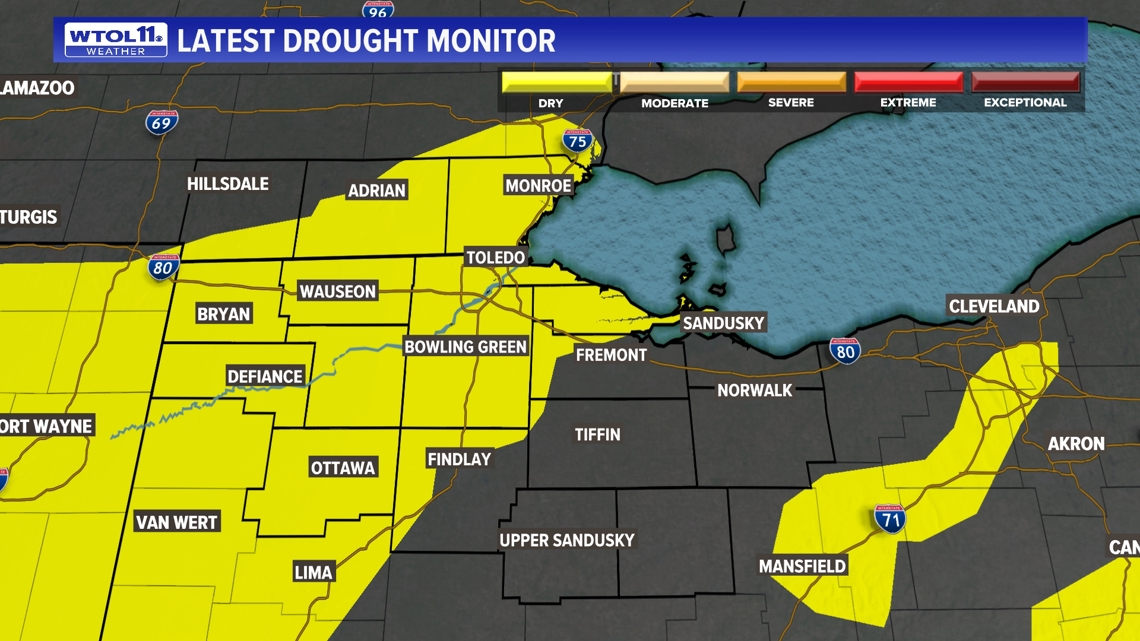
Heat & Drought Impacts
When heat and drought set over crops for an extended amount of time, it can put stress on crops to succeed and grow to where they need to be in time for harvest. If these conditions are present, a lot of things can go wrong with how the crop life cycle forms.
With higher temperatures, more moisture is demanded for the crop to survive and thrive, and if this happens then it leads to the crop's wilting and stunting growth. To bring it full circle, low precipitation means a low moisture supply that the crops can pull from to survive properly.
According to a study done by Climate Central, hotter days are usually sunnier with less cloud cover and rainfall. The second is how temperature is connected to evapotranspiration. Water can evaporate directly from the land surface or indirectly when plants drink water from the soil and release it through small pores on their leaves.
In many cases, when it gets hotter, the atmosphere becomes thirstier, drying out the Earth’s surface.
Essentially, temperature and precipitation feed off each other to survive the summer months in the evapotranspiration process.

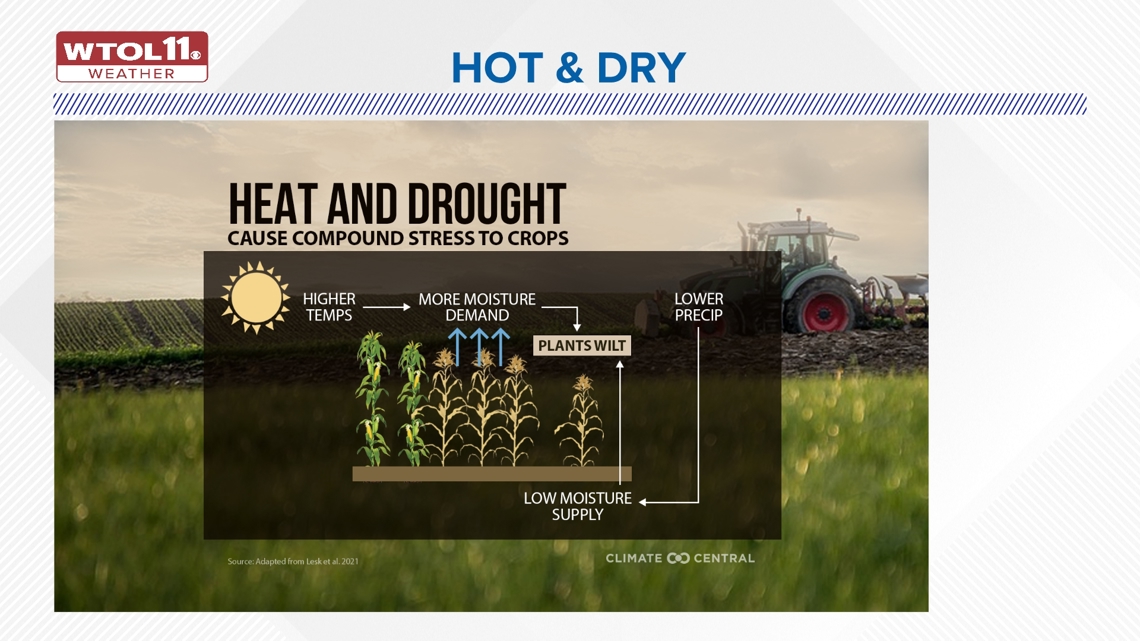
Risk of Drought in Ohio
With many areas across Ohio being prime spots for agriculture, there is a lot to gain, but also a lot to lose when it comes to the growing season.
A map done by Climate Central shows that Ohio is in the medium range for vulnerability to drought.

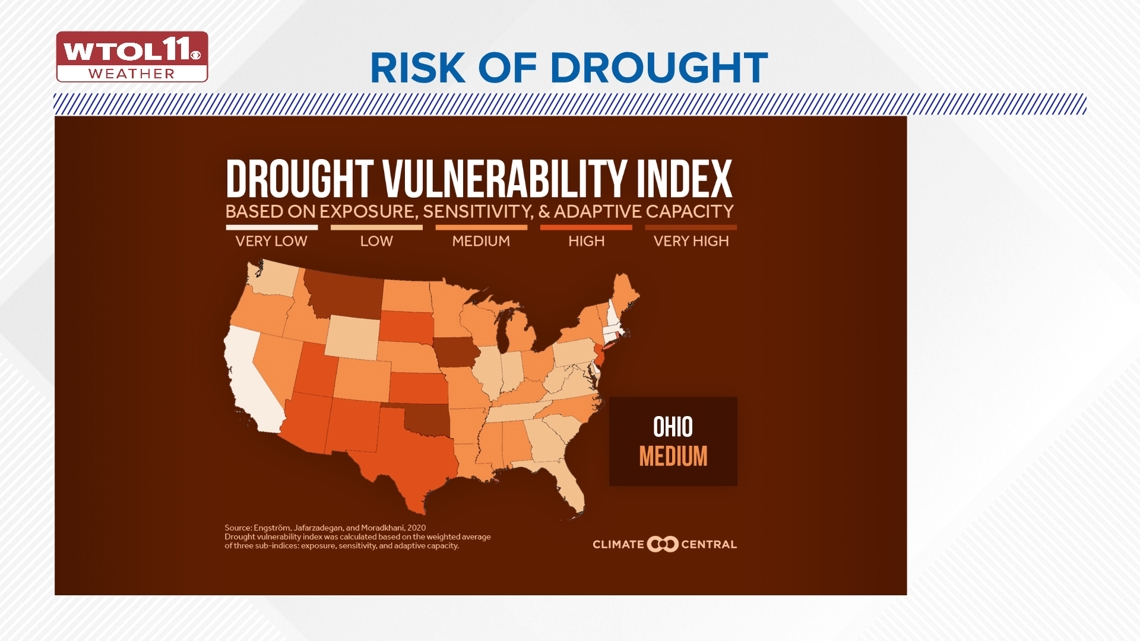
How they sum this up is from three components that they measure it by:
- Exposure: The frequency of drought, the state’s population, and the freshwater ecosystems that could be affected
- Sensitivity: A state’s likelihood of being negatively impacted by drought, considering industries such as agriculture, water recreation and hydropower
- Adaptive capacity: A state’s preparedness for drought and ability to recover, looking at the state’s drought plan, irrigation infrastructure and economic strength
All this together has resulted in a significant decline in corn production across the eastern portion of the United States in the 21st century.
According to Climate Central, climate models show that in many areas, drought and heat will align more often in the future, worsening crop damage as the climate warms.
The researchers estimate that U.S. yields may decline from current averages by 7% for corn and 9% for soybeans after 2050. Areas like the Midwest show the potential for much higher damages than the national average, where drought may exacerbate damages up to 10 to 20%, ranking among the worst places in the world, according to the study.


Why is this so important?
Drought has severely impacted many areas across the U.S., every year. Due to the production and cost of farming, the downside of it can be costly.
Drought has been one of the costliest disasters in the history of the U.S. for many years now.
According to Climate Central, the average cost lost is $6.2 billion annually since 1980.
Farming and agriculture are what keep our food security safe. To make this even more local, we were able to break down just how much goes into farming throughout northwest Ohio and southeast Michigan. The cost of operation is at the higher end, on the back there is plenty of profit that is made to keep our economy going.
The agriculture impact is significant, but have you ever wondered how impactful it is? The ERSI Drought Aware compiled some great data for how many total sales each county has made since 2000. One of the high counties that has made a significant amount from agriculture is Lenawee County where they have made $259,883,992 in total sales. Fulton County is next, where they have made $173,103,000 from agriculture since 2000.
Several counties have made over $100 million in sales from agriculture in our area, but for this to continue, for agriculture to thrive, global warming will have to slow down.
The chance for extreme heat and drought will continue to increase over the years if new ways to keep our crops healthy aren’t found which will likely lead to changes in our global food security, which will eventually lead to prices for produce increasing in an already inflated economy.

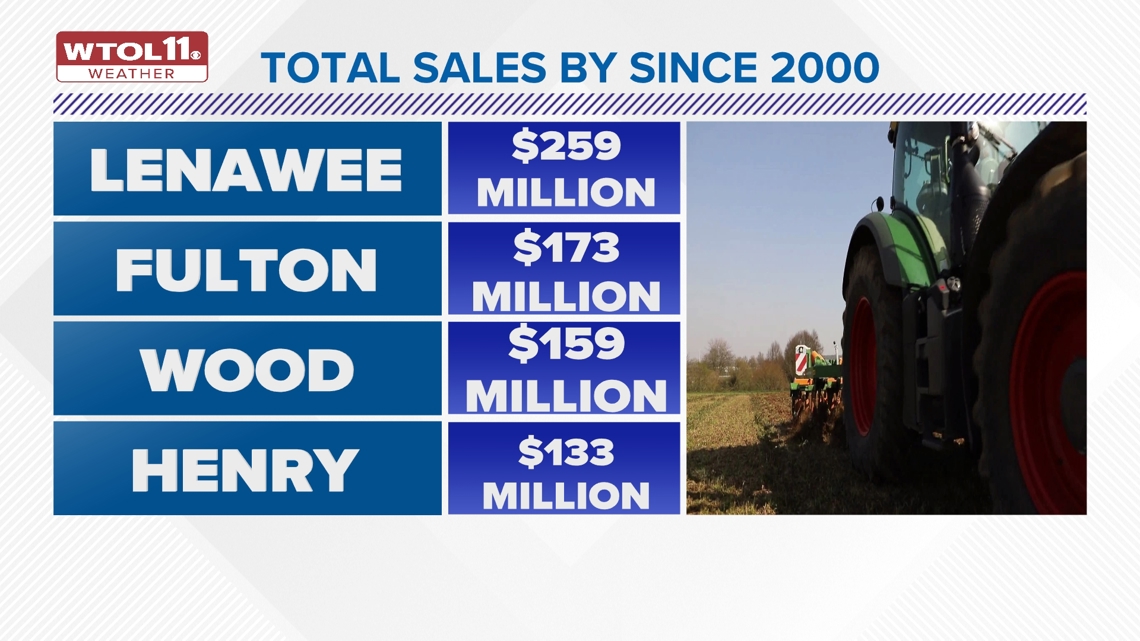

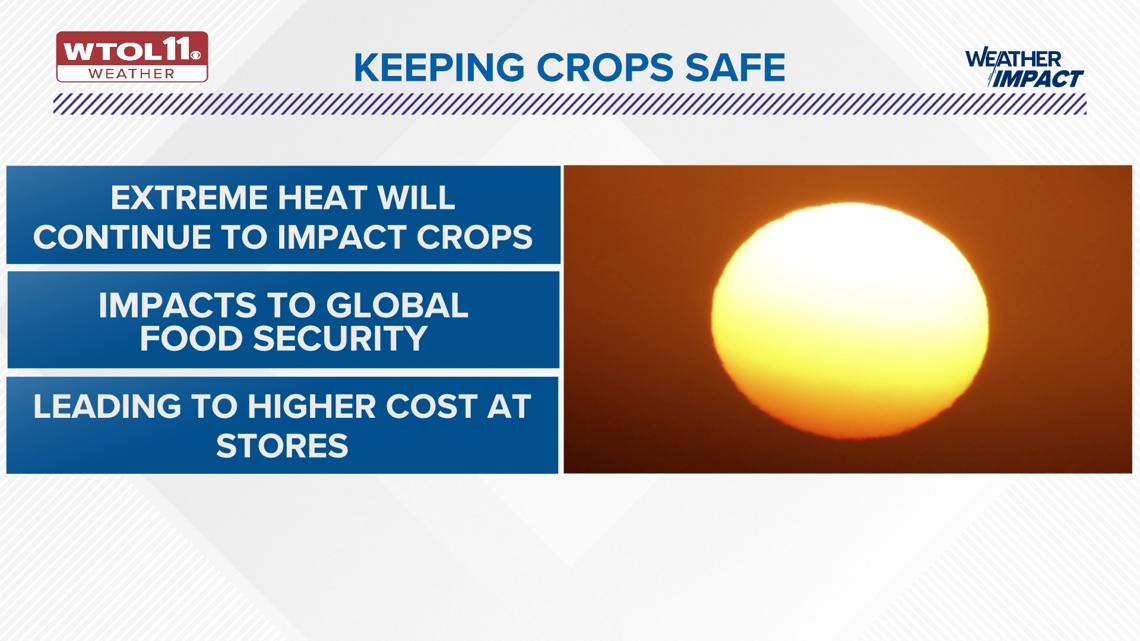
MORE FROM WTOL 11 WEATHER IMPACT:

